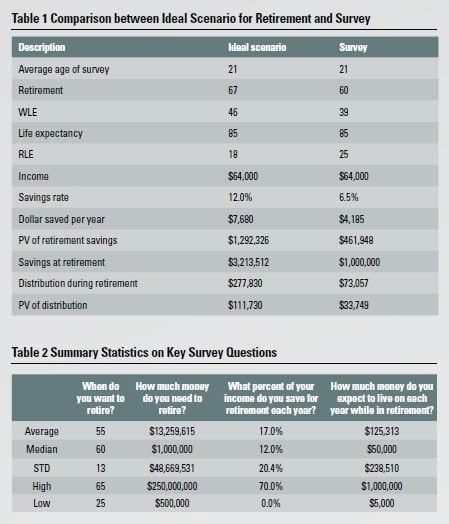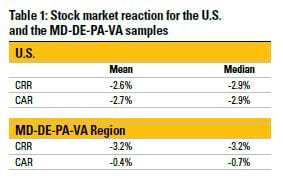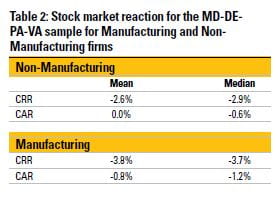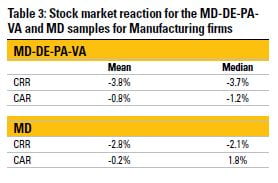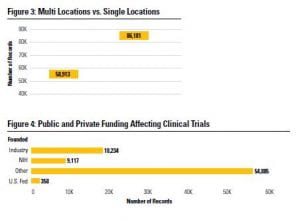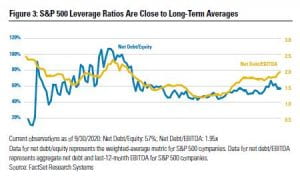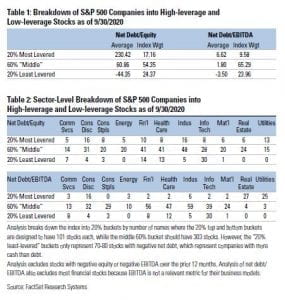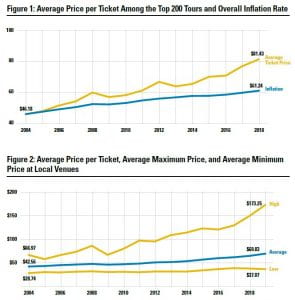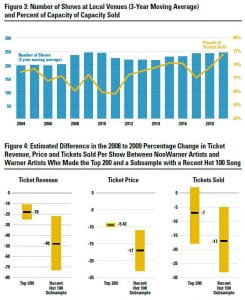Bradford Muir
Supervisor at Vallit Advisors
The COVID-19 pandemic has uniquely challenged
businesses; no business model or industry appears
to be immune. However, situations vary. Some
companies have been forced to adapt to avoid shuttering,
while others are riding out state-mandated
closures using cash on hand and Paycheck Protection
Program (PPP) loans. As a result, the effects of
COVID-19 on business valuations of privately held
companies can vary dramatically.
The pandemic has notably affected business valuations
through the discount rate used in the income approach
to valuation, in which projected future cash flows are
discounted to present value using a discount rate. This
article discusses the significance for valuations of privately
held businesses of (1) volatility and risk, (2) the
build-up method for determining the discount rate, and
(3) the effects of the COVID-19 pandemic on risk and
the equity discount rate for privately held businesses.
Volatility and Risk in the Global Pandemic
Volatility and risk matter because they affect what
buyers will pay for privately held businesses. Since the
pandemic’s start, U.S. equity markets have experienced
significant changes in volatility that are at least partly
tied to people’s perception of risk in those markets.
U.S. equities, as measured by the S&P 500 index, fell
more than 33% in the one-month period from February
20 to March 20 (Figure 1). However, they have
recouped these losses, eclipsing their late-February
high in late August.1
In addition, equity market volatility, which acts as a
gauge of investor sentiment, has hit levels of volatility
unknown since the 2007–2008 financial crisis. As shown
in Figure 2, the CBOE Volatility Index (VIX) soared
from 15.6 on February 20 to a record high of 82.7
less than 30 days later on March 16, due to the rapid,
unchecked spread of the coronavirus. Values greater
than 30 for the VIX, which represents the implied volatility
of 30-day options on the S&P 500, are generally
associated with a large amount of volatility because
of investor fear or uncertainty, while values below 20
generally correspond to less stressful, even complacent,
market conditions.
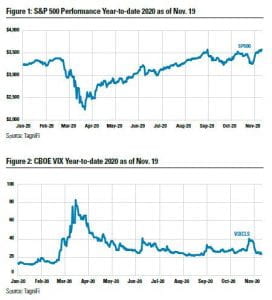
Despite efforts by the Federal Reserve and Congress to
stabilize equity markets, the VIX remained significantly
above pre-pandemic levels throughout the summer.
Volatility has remained high over the 60-day period
ended November 19 as the United States and many
European nations have seen a resurgence in new coronavirus
cases.
Risk is associated with volatility. The tighter the probability
distribution of returns for an investment in
the existing economic conditions, the lower the risk
profile of the investment. In other words, risk can be
defined as, “the degree of uncertainty (or lack thereof)
of achieving future expectations at the times and in
the amounts expected.”2
In business valuation, risk is evaluated, quantified, and
accounted for in the discount rate. A discount rate is a
rate of return used to convert a monetary sum, payable
or receivable in the future, into its present value.3 The discount
rate is equal to the “cost of capital,” the expected
rate of return that the market requires to attract funds
to a particular investment.4 Thus, the cost of capital
is based on the principle of substitution, in that it is
equal to the return that could be earned on alternative
investments with a similar level of risk.
Other terms used interchangeably to describe the cost
of capital include:
- Rate of return
- Required rate of return
- Cost of equity capital
- Weighted average cost of capital
- Alternative cost of capital
- Discount rate
- Hurdle rate
Risk and return are positively correlated. The greater the
perceived risk of an investment, the higher the required
rate of return an investor would demand from the
purchase of the investment. Accordingly, the discount
rate and value are negatively correlated. In other words,
when perceived risk and the discount rate increase,
the value of the company decreases, all else being held
constant. It is important to note that the relationship
between risk and value is nonlinear (e.g., a percentage
change in the discount rate does not result in an equal
percentage change in value).
The Build-Up Method for Determining the Discount Rate
For business valuations, two types of discount valuations
are relevant for investors who provide capital in
the form of equity or debt. They are the equity discount
rate and the weighted average cost of capital (WACC).
As stated above, the equity discount rate represents the
required rate of return for an equity investor to invest in
the business, whereas the WACC considers the return
required by both equity and debt investors.
The build-up method is one of the methods most widely
used by valuation analysts to determine the cost of
equity. As the name implies, the build-up method is an
equity discount rate estimated as the sum of multiple
rates of return and risk premia, expressed in percentages
as follows:
Cost of Equity = RFR + ERP + SRP + SCRP
RFR is the risk-free rate; ERP, equity risk premium;
SRP, size risk premium; and SCRP, specific company
risk premium.
Effects of COVID-19 on the Discount Rate’s Components
As of November 2020, the global COVID-19 pandemic
has significantly affected business valuations through its
impact on discount rates using the income approach,
in which projected future cash flows are discounted
or capitalized back to present value using a discount
rate (or a capitalization rate) to account for the risk of
achieving those projected cash flows.5 By their nature,
discount rates are tied closely to local, national, and
global economic performance, and therefore fluctuate
with the market.
When determining the cost of equity, the build-up
method considers and aggregates multiple building
blocks (RFR, ERP, SRP, and SCRP). With the spread of
COVID-19, most of these building blocks have fluctuated.
Risk-free rates are currently lower as a result of the
Federal Reserve maintaining a low interest rate environment.
On the other hand, the equity risk premium has
increased as a result of general economic instability.
Additionally, as companies battle an economic downturn
and potentially going out of business as a result
of COVID-19, the SCRP can also increase as a result
of the greater risk of the company not achieving its
projections. We discuss the effects of the pandemic on
each component below.
Risk-Free Rate
The RFR is the rate of return available on
investments free of default risk. The most
appropriate proxy for the RFR is the yield on a
30-year U.S. Treasury bond, 10 years into its life
cycle with 20 years remaining.6 Valuation analysts
typically get cost of equity data including RFR
guidance from Duff & Phelps.
When equity markets tumble, as they did at the beginning
of the pandemic, an RFR-lowering “flight to quality”
typically follows as investors seek the perceived safety
of Treasuries. If a valuation analyst were to use the spot
yield in the build-up method under these conditions,
the result would be a lower equity discount rate and
cost of capital, all other components held the same,
rather than reflecting the increased risk associated with
an uncertain economic environment. In a situation
like this, some valuation analysts may choose to use a
normalized RFR to account for inflation and short-term
effects on interest rates.7 A normalized RFR is typically
estimated by averaging yields to maturity on long-term
government bonds over several periods.
As a result of the pandemic, in early July, Duff & Phelps
lowered its normalized U.S. RFR from 3.0% to 2.5%
for estimating discount rates in valuations after June
30, 2020.8
Equity Risk Premium
The expected returns on equity are much less certain
than on U.S. Treasuries, so they are riskier than the
interest and maturity payments on U.S. Treasury obligations.
Accordingly, in exchange for an increase in risk,
investors demand higher returns for equity investments.
The ERP reflects this additional risk.
In late March 2020, Duff & Phelps increased its U.S.
ERP from 5.0% to 6.0%. In doing so, it cited some
of the pandemic’s effects on U.S. businesses, including
supply chain disruptions, job losses, business closures,
and collapsing equity markets.9 ERP is a critical component
of the build-up method of determining the equity
discount rate, and this suggested change (for developing
discount rates as of March 25, 2020, and forward)
reflects the severity of the current crisis. Keep in mind
that the discount rate has an inverse relationship with
value. As the discount rate increases, all other things
remaining constant, the value of the business decreases.
Professor Aswath Damodaran suggests using a COVIDadjusted
ERP, which he estimates monthly based on an
expected earnings analysis. His COVID-adjusted ERP
has ranged from 6.02% in April 2020 to the current
ERP of 5.02% for November 2020. Damodaran, a
professor of business valuation and corporate finance
at New York University’s Stern School of Business,
has published numerous articles and books on the
equity discount rate and the components of the buildup
method. Damodaran maintains a website and a
blog, which he uses as a platform to update valuation
analysts on the perceived effects of COVID-19 on the
financial marketplace.10
Simply adjusting risk percentages for every valuation
is not enough to account for the effects of COVID-
19.11 Damodaran says that “It is almost impossible
to adjust for [COVID-19] in discount rates and it is
therefore imperative that you make judgments about
the likelihood that your company will not make it, and
this probability will be higher for smaller companies,
young companies, and more indebted companies.”12
Amid great uncertainty, Damodaran suggests that valuation
analysts cannot simply rely on higher discount
rates to account for COVID-19. Instead, experts must
apply critical judgment more than ever before, to ensure
that all risk factors are considered in developing the
equity discount rate.
Size Premium
Small capitalization stocks are considered riskier investments
than large capitalization stocks. As a result,
investors require additional return in exchange for
the added risk of investing in small-cap stocks. The
SP represents the additional return expected by an
investor in the stock of a small-cap company over that
of an otherwise comparable investment in a larger
company. This also applies to investments in privately
held companies.
Little consensus exists among valuation analysts about
the effects of COVID-19 on the size premium. Generally,
smaller companies have been hit worse than large
companies with cash on the balance sheet to weather
the short-term cash crunch. Time will tell whether
small companies are disproportionately affected by the
pandemic, which would warrant an increase in the SP. If
increases are needed, we expect to see higher observed
SP in business valuations in the future, depending on
the course of the virus and the country’s response.
Specific Company Risk Premium
An SCRP is often appropriate to reflect unsystematic
risk factors, which refers to risks that are specific to the
company relative to the market as a whole. This is an
area where the judgment of the valuation analyst comes
into play. Examples of unsystematic risk could include
the financial history and current financial condition
of the entity, depth of management, key-person risk,
customer concentration, and competition.
COVID-19 has disproportionately affected businesses
in some industries, while leaving others relatively
unscathed or even benefiting from the pandemic. Projection
risk—the risk of a company not achieving its
projections—can either be accounted for by adjusting
a company’s discrete projected cash flows to include a
probability weighting or other applicable adjustment,
or by including an additional risk consideration in the
SCRP component of the build-up method of determining
the discount rate.
The ability of a company to pivot and to take advantage
of opportunities has proven critical during the pandemic.
For example, in the food service industry, restaurants
that have successfully and efficiently shifted from dine-in
to curbside pickup and delivery have generally fared
better than restaurants tied to the dine-in experience.
Consumer demand for dine-in restaurants may not
rebound until after widespread COVID-19 vaccinations,
or even later, which translates to an additional level of
uncertainty for their projected cash flows. Companies
that have retooled or adapted their business model have
generally outperformed and may not have suffered
financially as a result of the pandemic, so a change in
SCRP may not be necessary.
The pandemic forces the valuation analyst to consider
factors such as state and local regulations and their
effects on business operations and risk. For example,
a brick-and-mortar business with locations throughout
the country might be better geographically diversified
when some locations are forced to close, but others can
remain open. The analyst must become familiar with
the dynamic regulatory environment in each location.
Cost of Equity and WACC
The sum of the above components of the build-up
method is the equity discount rate. The estimation of
the WACC considers the equity discount rate, the cost
of debt, and the capital structure. The cost of debt
is based on the company’s outstanding debt obligations
and consideration of market conditions.13 The
capital structure represents the proportion of equity
and debt for the company, which is applied to the
equity discount rate and cost of debt, the sum of which
represents the WACC.
For the foreseeable future, the risk associated with the
uncertainty and volatility of the COVID-19 pandemic
will continue to be a critical factor in business valuations.
In the current environment, the valuation analyst
must consider many more factors with a higher level
of scrutiny when determining an equity discount rate.
Analysts must critically examine the outlook for the
company being valued; its adaptability; the industry;
customer relationships; local, state, and federal regulations
and COVID restrictions; and dozens of other
dynamic factors. Because accounting for the effects of
a modern-day global pandemic is uncharted territory,
analysts can only speculate about the projected effects
that a vaccine or a global reduction in case counts and
deaths will have on risk and the equity discount rate.
Endnotes
1As of November 19, 2020.
2David Laro and Shannon P. Pratt, Business Valuation and Federal
Taxes: Procedure, Law, and Perspective, 2nd ed., Chapter 12.
3BVR’s Glossary of Business Valuation Terms 2010, Business Valuation Resources, p. 6, https://sub.bvresources.com/freedownloads/
bvglossary10.pdf.
4BVR’s Glossary of Business Valuation Terms 2010, Business Valuation Resources, p. 5, https://sub.bvresources.com/freedownloads/
bvglossary10.pdf.
5The income approach includes the discounted cash flow (DCF)
method and the capitalized cash flow (CCF) method. The CCF
method may be inappropriate for companies that are experiencing
temporarily reduced revenue and profitability as a result of
COVID-19; instead, a valuation professional may choose to use the
DCF method when a company’s cash flows have been affected in
the short term by the pandemic, but they expect financial performance
to recover in the next few years.
6These rates can be obtained online from the Federal Reserve
Statistical Release H.15.
7The assumption that a normalized RFR might yield the
best estimate of the risk-free rate in times of flight to quality arose during
the 2008-2009 financial crisis. See Roger Grabowski, “Developing
the Cost of Equity Capital: Risk-free Rate and ERP during Periods
of ‘Flight to Quality,’” Business Valuation Review, Winter 2010.
8Carla Nunes and James P; Harrington, “Duff & Phelps U.S.
Normalized Risk-Free Rate Lowered from 3.0% to 2.5%, Effective
June 30, 2020,” https://www.duffandphelps.com/insights/
publications/cost-of-capital/us-normalized-risk-free-rate-loweredjune-
30-2020.
9Carla Nunes and James P; Harrington, “Duff & Phelps
Recommended U.S. Equity Risk Premium Increased from 5.0% to 6.0%
Effective March 25, 2020,” https://www.duffandphelps.com/
insights/publications/cost-of-capital/us-equity-risk-premiumincreased-
march-25-2020.
10Aswath Damodaran, Damodaran Online, http://pages.stern.nyu.
edu/~adamodar/.
11http://pages.stern.nyu.edu/~adamodar/; http://www.stern.nyu.
edu/~adamodar/pc/implprem/ERPbymonth.xlsx.
12Aswath Damodaran, “A Viral Market Meltdown V: Back to
Basics!” Musings on Markets, March 31, http://aswathdamodaran.
blogspot.com/2020/03/a-viral-market-meltdown-v-bailouts-and.
html
13Since the interest paid on most debt remains tax deductible
under the Tax Cuts and Jobs Act of 2017, the interest rate applicable to
this debt is tax-affected to produce an after-tax cost of debt, see
https://www.cbh.com/guide/articles/planning-for-the-new-businessinterest-
expense-deduction-limitation/
References
Board of Governors of the Federal Reserve System, Federal Reserve
Statistical Release H.15. https://www.federalreserve.gov/releases/
h15/
BVR’s Glossary of Business Valuation Terms 2010, Business Valuation
Resources LLC. https://sub.bvresources.com/freedownloads/
bvglossary10.pdf
Damodaran, Aswath, Damodaran Online. http://pages.stern.nyu.
edu/~adamodar/
Damodaran, Aswath, Musings on Markets, http://aswathdamodaran.
blogspot.com/
Grabowski, Roger J., “Developing the Cost of Equity Capital:
Risk-free Rate and ERP during Periods of ‘Flight to Quality,’” Business
Valuation Review, Winter 2010.
Laro, David and Shannon P. Pratt, Business Valuation and Federal
Taxes: Procedure, Law, and Perspective, 2nd edition, Hoboken,
NJ: John Wiley & Sons, 2011.
Nunes, Carla, and James P. Harrington, “Duff & Phelps Recommended
U.S. Equity Risk Premium Increased from 5.0% to 6.0%
Effective March 25, 2020,” Duff & Phelps, March 27. https://
www.duffandphelps.com/insights/publications/cost-of-capital/usequity-
risk-premium-increased-march-25-2020
Nunes, Carla, and James P. Harrington, “Duff & Phelps U.S.
Normalized Risk-Free Rate Lowered from 3.0% to 2.5%, Effective
June 30, 2020,” Duff & Phelps, July 9. https://www.duffandphelps.
com/insights/publications/cost-of-capital/us-normalized-risk-freerate-
lowered-june-30-2020
Pratt, Shannon P., and Roger J. Grabowski, Cost of Capital, 5th
edition, Hoboken, NJ: John Wiley & Sons, 2014.
TagniFi, TagniFi Econ. https://www.tagnifi.com/





